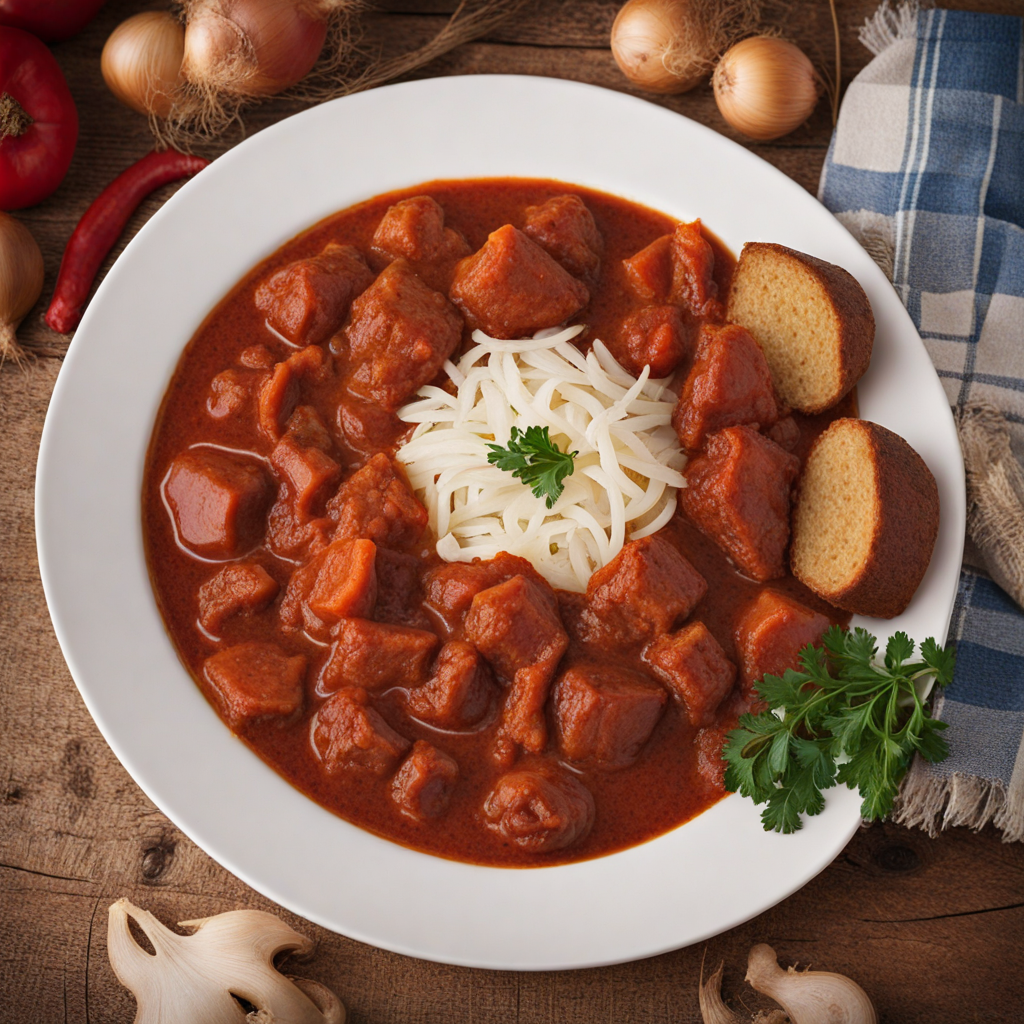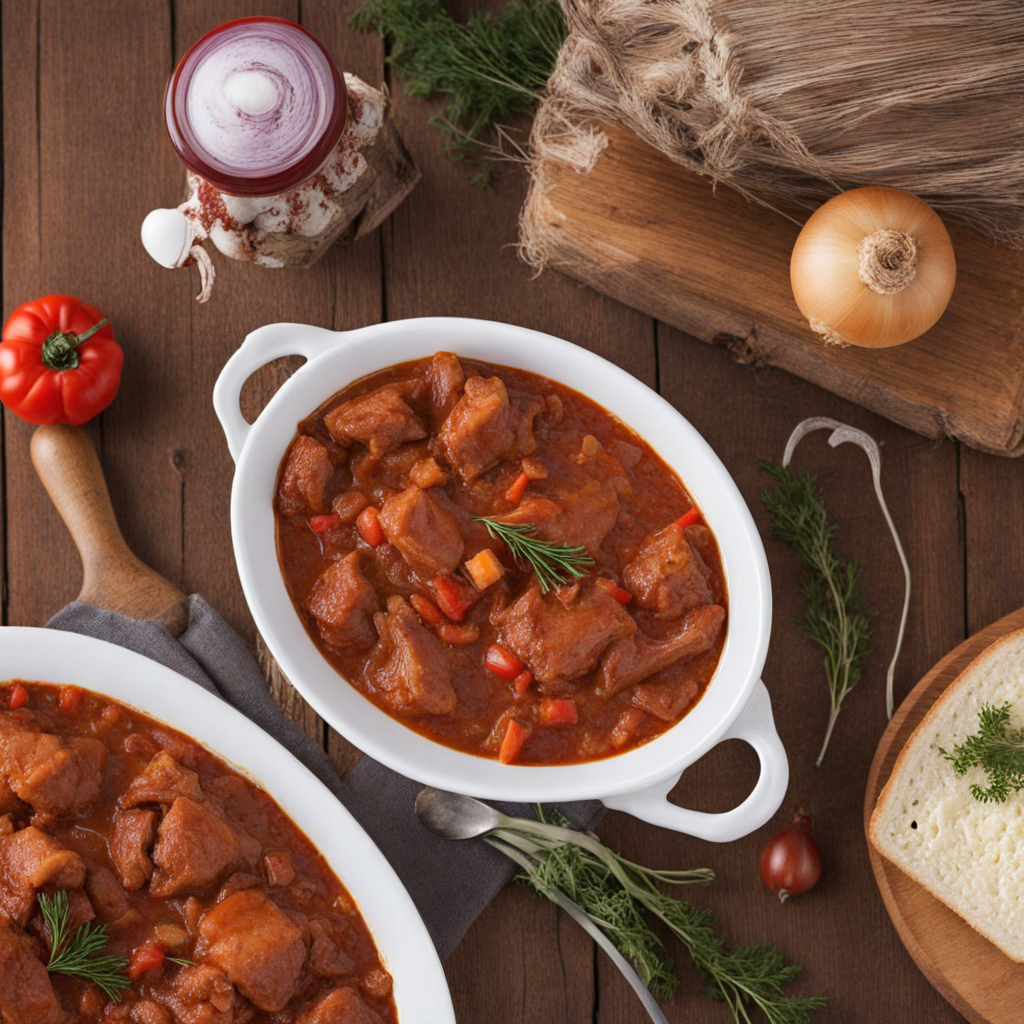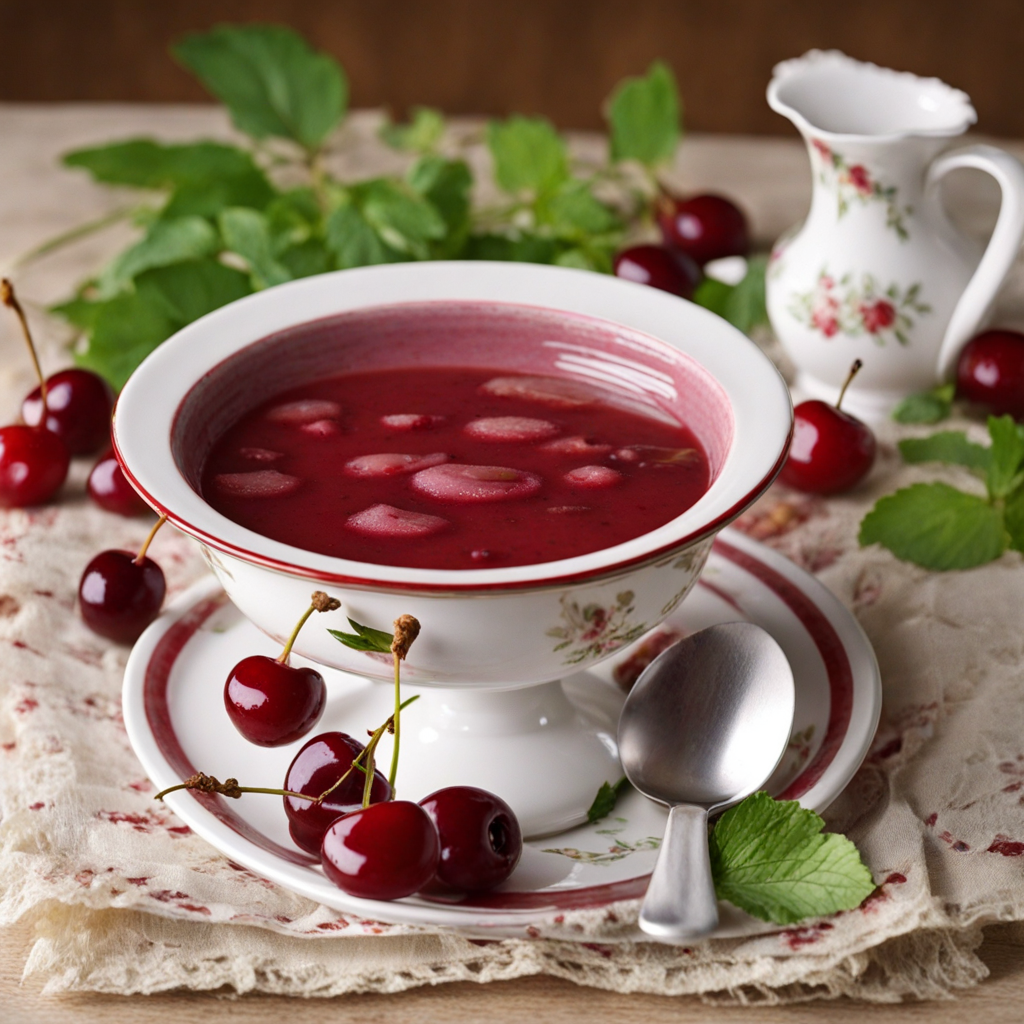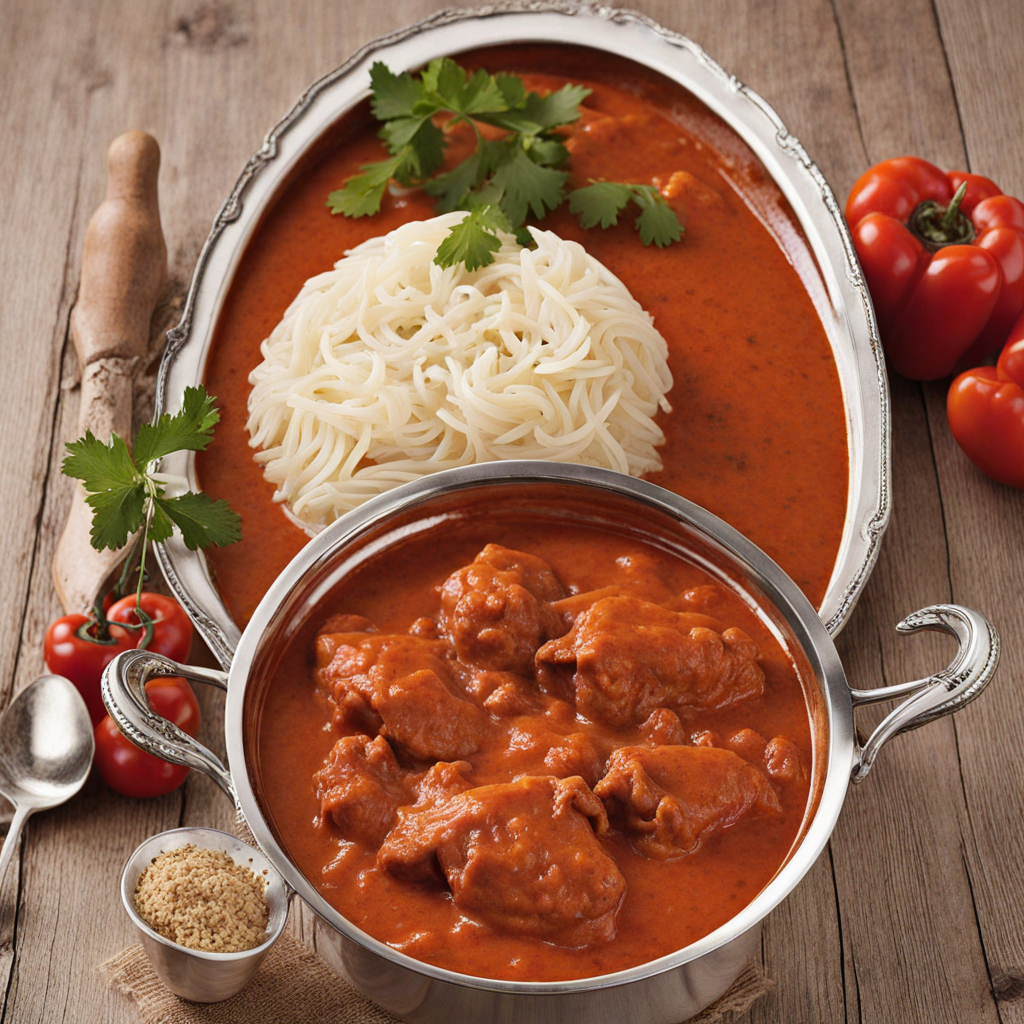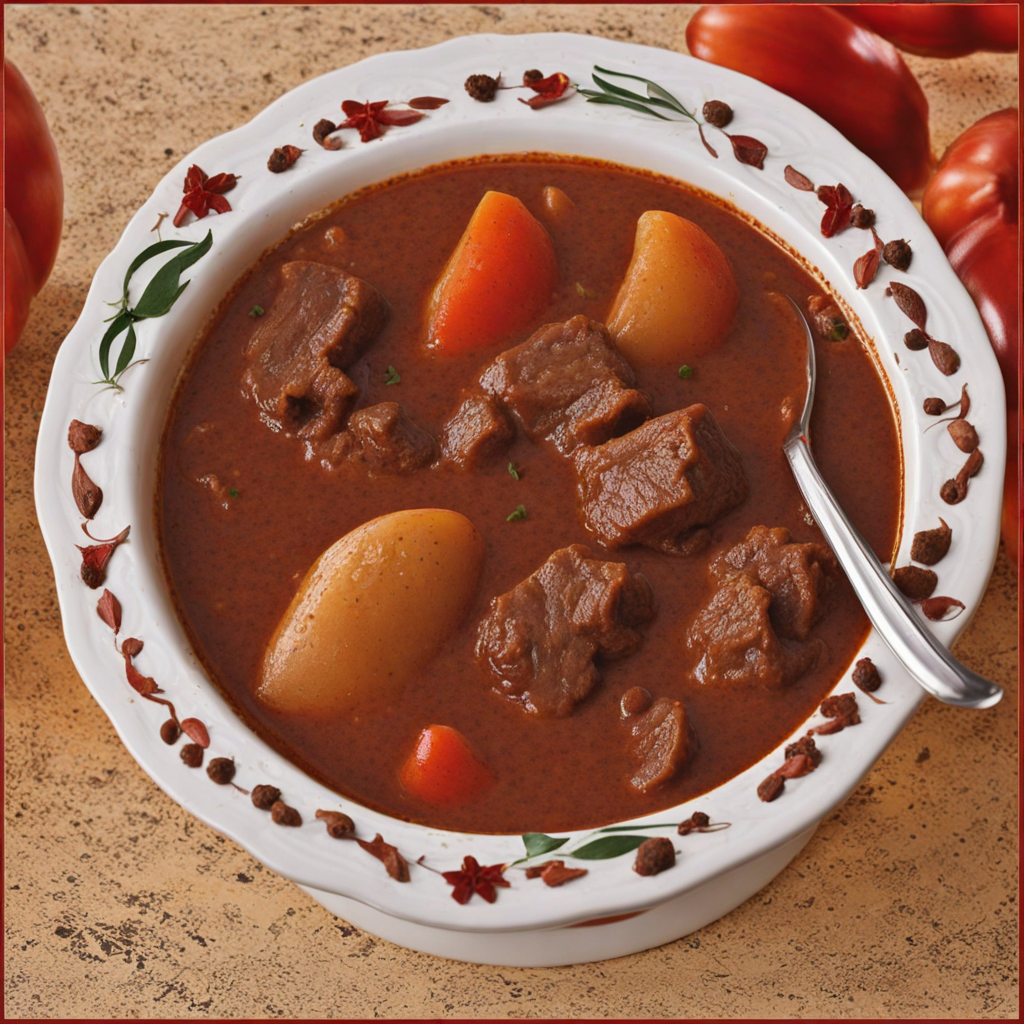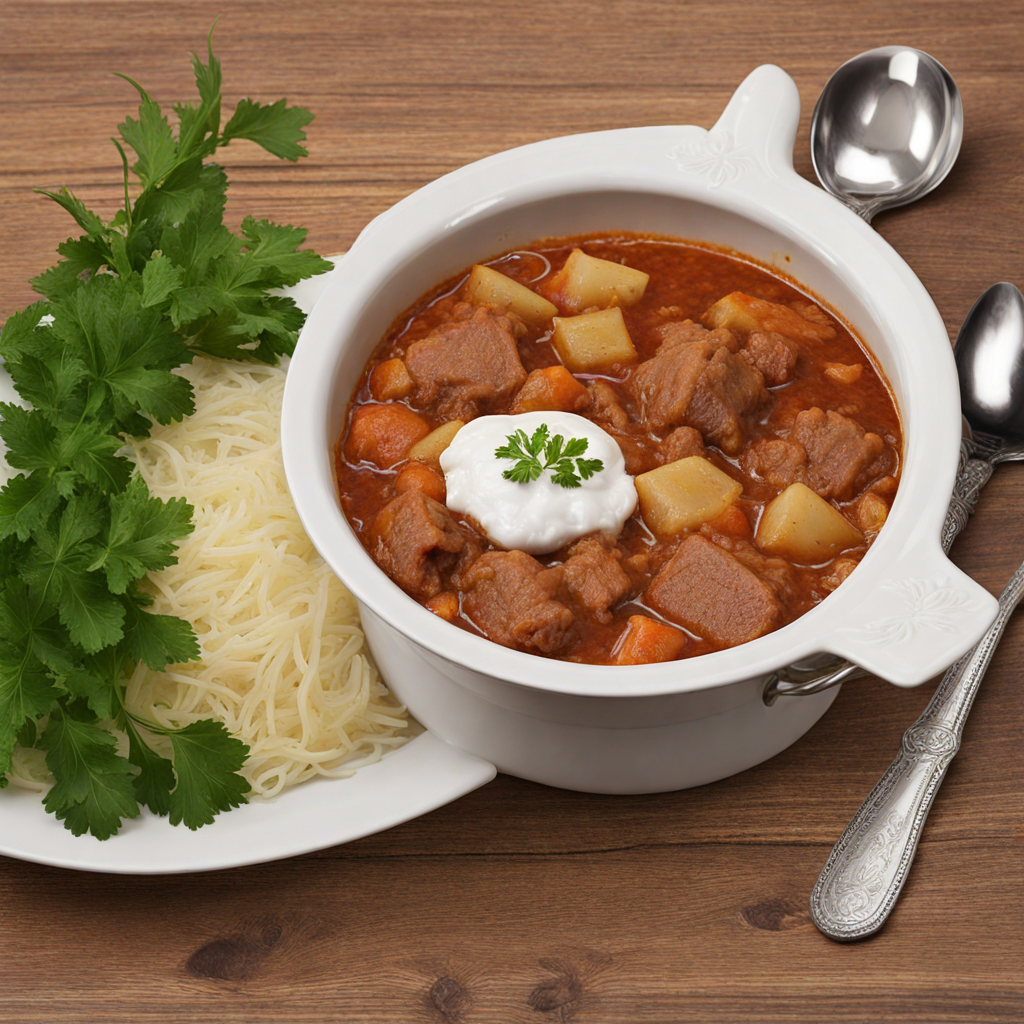Pörkölt
Pörkölt is a hearty and aromatic stew that embodies the essence of Hungarian cuisine. This dish is primarily made with meat, traditionally beef, pork, or lamb, which is slow-cooked with onions, garlic, and a generous amount of sweet Hungarian paprika. The paprika not only imparts a vibrant red color but also infuses the dish with a rich and slightly smoky flavor, a hallmark of Hungarian cooking. The meat is typically cut into chunks and seared to develop a deep, savory crust before being simmered in a flavorful broth, allowing the spices and natural juices to meld together beautifully. As the pörkölt cooks, the onions caramelize, adding a subtle sweetness that balances the dish's savory elements. Depending on regional variations, you might find additional ingredients such as tomatoes, bell peppers, or even potatoes, which enhance the stew's heartiness and complexity. The slow cooking process allows the meat to become tender, soaking up the vibrant flavors of the sauce, and resulting in a dish that is both comforting and satisfying. Served with a side of nokedli (Hungarian dumplings) or crusty bread, pörkölt becomes a complete meal that warms both body and soul. Pörkölt is not just a dish; it's an experience steeped in tradition and culture. Often enjoyed during family gatherings or festive occasions, this stew is a celebration of flavors that showcases the importance of paprika in Hungarian cuisine. Each region in Hungary has its own twist on pörkölt, with variations that might include different proteins or seasoning techniques, inviting food lovers to explore the diverse interpretations of this beloved dish. Whether you’re savoring it for the first time or revisiting an old favorite, pörkölt promises a delightful journey through the rich culinary landscape of Hungary.
How It Became This Dish
Pörkölt: A Historical Journey Through Hungary’s Culinary Tradition Pörkölt, a rich and flavorful stew, is one of Hungary’s most beloved dishes, embodying the heart and soul of Hungarian cuisine. Its history spans centuries, interwoven with the cultural tapestry of the Hungarian people, and has evolved to become a staple in households across the nation and beyond. To understand pörkölt, we must delve into its origins, cultural significance, and its development through the ages. #### Origins of Pörkölt The roots of pörkölt can be traced back to the 9th century, when the Magyar tribes settled in the Carpathian Basin. The word "pörkölt" itself derives from the Hungarian verb "pörkölni," meaning "to sizzle," which hints at the cooking technique that defines this dish. Originally, it was a simple stew made from meat, water, and salt, cooked in a cauldron over an open fire, a method that not only preserved the meat but also enhanced its flavors. Pörkölt is often compared to the French "ragout" or the Spanish "guiso," but it has its own unique identity marked by the use of paprika, a spice that has become synonymous with Hungarian cuisine. Paprika was introduced to Hungary in the 16th century after the Ottomans brought it from the New World. It quickly became a central ingredient in many Hungarian dishes, including pörkölt, where its vibrant color and distinct flavor elevate the stew to new heights. #### Cultural Significance In Hungary, pörkölt is more than just a meal; it is a cultural symbol, reflecting the country’s agrarian roots and communal values. Traditionally, pörkölt is a dish that brings people together, often served during family gatherings and celebrations. It represents hospitality and the warmth of home-cooked meals, making it a cherished part of Hungarian tradition. Pörkölt also embodies the Hungarian spirit of adaptation and ingenuity. As Hungary faced various influences throughout its history—be it Ottoman, Austrian, or more recently, global culinary trends—the dish has evolved, incorporating different meats, spices, and cooking techniques. Each region of Hungary has its own variation of pörkölt, influenced by local ingredients and traditions, making it a diverse and adaptable dish that showcases regional pride. #### Development Over Time The evolution of pörkölt can be seen through its different variations and the ingredients that have been used throughout the centuries. Initially, pörkölt was primarily made with beef or mutton. However, as the dish gained popularity, cooks began to experiment with other meats, including pork, chicken, and even game meats such as venison or rabbit. This versatility allows pörkölt to cater to various tastes and preferences. One of the most notable variations is "pörkölt de gulyás," which combines elements of gulyás, another iconic Hungarian dish. While gulyás is a soupier dish, pörkölt has a thicker consistency, often served with a side of dumplings or noodles. This adaptation highlights the interplay between different Hungarian culinary traditions and the ingenuity of home cooks who tailor recipes to their own tastes. The use of paprika in pörkölt is also a testament to the changing culinary landscape of Hungary. Initially, pörkölt was seasoned with only salt and perhaps some herbs. The introduction of paprika revolutionized the dish, adding depth and complexity to its flavor profile. Today, pörkölt is often prepared with a mix of spices, including caraway seeds, garlic, and onions, which contribute to its robust taste. As Hungarian cuisine became more recognized internationally in the 19th century, pörkölt began to emerge in cookbooks and culinary literature, further solidifying its place in the national identity. Renowned chefs and home cooks alike began to publish their own recipes, each adding their unique twist while adhering to the traditional principles of the dish. #### Modern-Day Pörkölt In contemporary Hungary, pörkölt continues to thrive as a beloved comfort food. It is often served in homes, at restaurants, and during festivals, where it takes center stage in culinary showcases. The dish has also transcended borders, finding its way into the kitchens of expatriates and food enthusiasts around the world. Modern chefs have embraced pörkölt, experimenting with new ingredients and techniques while maintaining the essence of the dish. Innovations such as using slow cookers or sous-vide methods have gained popularity, allowing for a different approach to texture and flavor development. Additionally, vegetarian and vegan variations of pörkölt have emerged, catering to the growing demand for plant-based diets. These adaptations preserve the spirit of pörkölt while making it accessible to a broader audience. Despite these modern twists, the traditional preparation of pörkölt remains a treasured practice in many Hungarian households. Families pass down cherished recipes from generation to generation, ensuring that the flavors and techniques of pörkölt endure. The communal aspect of preparing and enjoying pörkölt together continues to be a vital part of Hungarian culture, fostering relationships and creating lasting memories around the dining table. #### Conclusion Pörkölt is more than just a dish; it is a reflection of Hungary’s rich history, cultural identity, and culinary evolution. From its humble beginnings as a simple stew to its status as a symbol of Hungarian hospitality and innovation, pörkölt encapsulates the essence of what it means to be Hungarian. It is a dish that tells the story of a nation, one simmering pot at a time, inviting people to gather, share, and celebrate the flavors of life. Whether enjoyed in a rustic kitchen in Hungary or a modern restaurant abroad, pörkölt continues to warm hearts and nourish souls, ensuring its place in the culinary canon for generations to come.
You may like
Discover local flavors from Hungary


